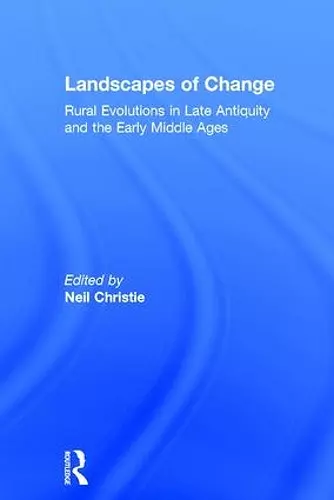Landscapes of Change
Rural Evolutions in Late Antiquity and the Early Middle Ages
Format:Hardback
Publisher:Taylor & Francis Ltd
Published:12th Jul '04
Currently unavailable, and unfortunately no date known when it will be back

Only in recent years has archaeology begun to examine in a coherent manner the transformation of the landscape from classical through to medieval times. In Landscapes of Change, leading scholars in the archaeology of the late antique and early medieval periods address the key results and directions of Roman rural fieldwork. In so doing, they highlight problems of analysis and interpretation whilst also identifying the variety of transformations that rural Europe experienced during and following the decline of Roman hegemony. Whilst documents and standing buildings predominate in the urban context to provide a coherent and tangible guide to the evolving urban form and its society since Roman times, the countryside in many ages remains rather shadowy - a context for the cultivation, gathering and movement of food and other resources, inhabited by farmers, villagers and miners. Whilst the Roman period is adequately served through occasional extant remains and through the survey and excavation of villas and farmsteads, as well as the writings of agronomists, the medieval one is generally well marked by the presence of still extant villages across Europe, often dependent on castles and manors which symbolise the so-called 'feudal' centuries. But the intervening period, the fourth to tenth centuries, is that with the least documentation and with the fewest survivals. What happened to the settlement units that made up the Roman rural world? When and why do new settlement forms emerge? Landscapes of Change is essential reading for anyone wanting an up-to-date summary of the results of archaeological and historical investigations into the changing countryside of the late Roman, late antique and early medieval world, between the fourth and tenth centuries AD. It questions numerous aspects of change and continuity, assessing the levels of impact of military and economic decay, the spread and influence of Christianity, and the role of Germanic, Slav and Arab settlements in disrupting and redefining the ancient rural landscapes.
'... a book of rare excellence... it teaches a vast amount about postclassical economies and societies. It offers up-to-date syntheses of fresh archaeological data, much of it hard for non-specialists to reach at all. It sheds considerable light on vital and neglected matters of rural land use and settlement, becoming thereby a precious point of reference. This rich collection confirms how marvelously complex, and how regionally diverse, was the transition from classical to medieval times.' Bryn Mawr Classical Review 'Neil Christie, has assembled a distinguished cast of scholars to discuss this problem for each of their particular areas of knowledge, and himself considers common threads, in an introductory chapter which is intelligent and comprehensive.' Antiquity
ISBN: 9781840146172
Dimensions: unknown
Weight: 453g
342 pages